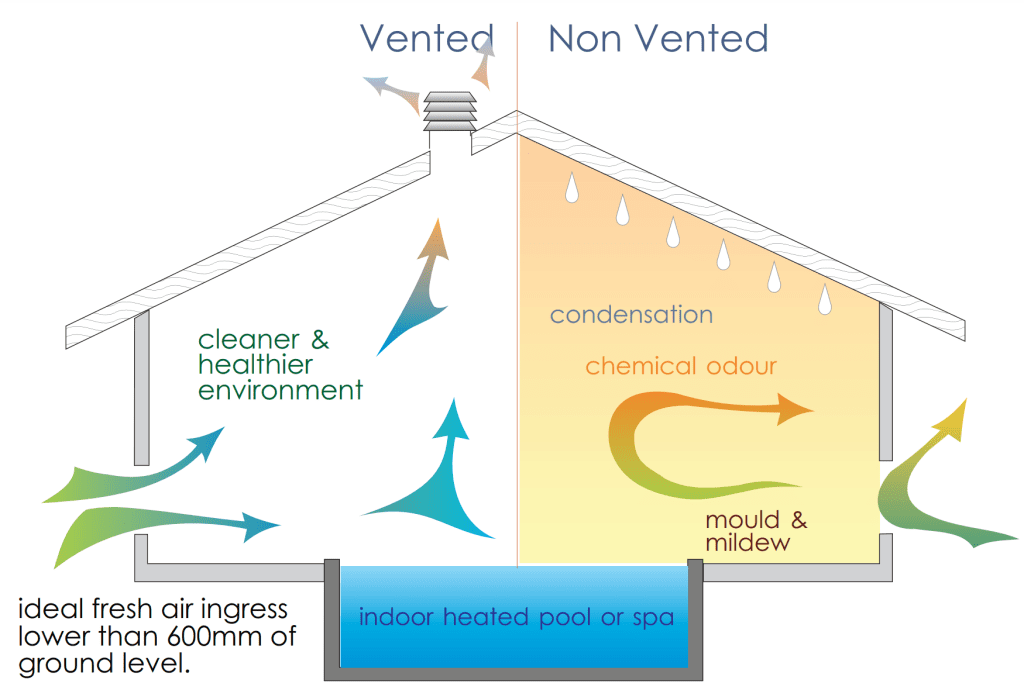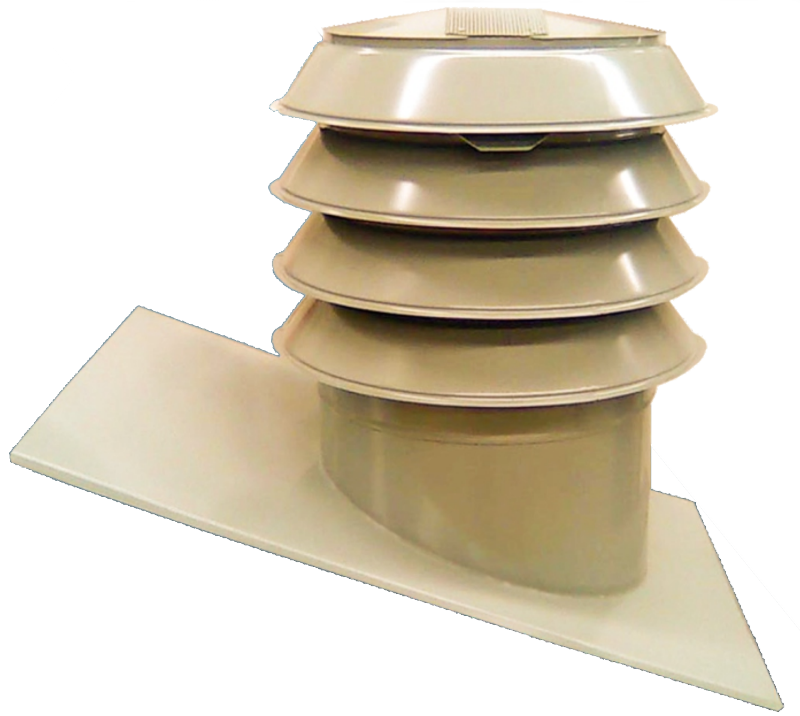Venting Indoor Pools and Spas
by Isa Stralian
The necessity of venting indoor pools and other wet areas is forgotten until all manner of problems arise.
Odour in particular, heralds the reality that something is wrong, and has been so for some time.
Cross Flow venting is inefficient and cannot be regulated and so never appropriate for heated water enclosures.
Mechanical venting such as exhaust fans have an unacceptable failure rate and have high power consumption
They can never be as effective or cost efficient as an appropriate natural flow system.
Problems to avoid
- moisture (absorption into the building fabric eventually causing material rot and contribute to unpleasant odour).
- precipitation ( which presents itself as indoor rain dripping down walls and glass)
- odour (that presence that has you forever running for room fresheners before the guest(s) arrive.


Whilst drafts may be considered to be a form of ventilation they should be avoided as their presence often promotes thermal imbalance causing colds and other respiratory problems.
Before the selection and implementation of natural ventilation equipment to wet area enclosures an understanding of the dynamics involved is required.
An indoor pool/spa area is not just a larger bathroom, as the presence of a large area of heated water is constant, not occasional.
Mechanical Services
It is not that mechanical services should not be employed in establishing the correct moisture balance however it is not an alternative for the ventilation necessary.
It is a refinement to the theme and not the theme itself.
Mechanical services are also subject to failure in a corrosive (chlorinated) environment particularly when used for egress of the air volume
Balance
Correct ventilation of enclosure is paramount in ensuring that the area provides the maximum benefits whilst requiring minimal maintenance.
Too much is made of trying to have the swimming pool enclosure conform to a design theme without appropriate consideration to the essential fundamentals as is required for wet areas, heated or otherwise.
Wet areas need continuous and effective ventilation in an appropriate manner.
Fundamental to venting a pool enclosure is peripheral air ingress ideally the lower the better and a central convergence of the air mass discharging to atmosphere.
As to location of ingress, the higher the peripheral air ingress, the greater the incidence of moisture precipitation within the building with a heated water mass.
The one aspect that is continually overlooked is that ingress of dust into any area is proportional to the air volume entering the area.
This is why a natural balanced flow according to the needs of the area should be understood rather than uncontrolled ingress by any means.
The phenomena of moisture precipitation commonly referred to as indoor rain, is a situation brought about by the sharp contrast of thermal differentials between inside and ambient, occurring principally of an evening during frost conditions (zero movement of air during winter)
Odour
The spread of odour created by varying forms of chlorination, mould etc.can also contribute to a degree of discomfort throughout a building particularly those of a residential situation where the natural inclination is to close everything up when the building, or area, is unoccupied.
The problem of odour can only be resolved by air washing (ventilating) the area so as to offset any mould and mildew as might grow as a consequence of moisture saturation in the building materials.
In reality if odour is present, the building material degradation has already commenced.
The air volume exchange need to be proportional to the moisture levels being introduced into the air volume as well as temperature.
The higher the temperature the greater the venting air flow potential. This does not mean that the flow of air needs to be high velocity but greater volume.
In initial building design, careful consideration as to the nature and character of the area ultimately determines the necessary equipment required to establish the correct ventilation dynamics deemed suitable to the area.
Retro fitting
In retro fitting, a complete and accurate assessment of the existing dynamics is required before the solution can be determined.
This can be a costly affair in contrast to the implementation of natural ventilation during the initial building construction phase.
It usually means that you’ll end up chasing your tail because as you resolve one issue, another pops up as a consequence.
